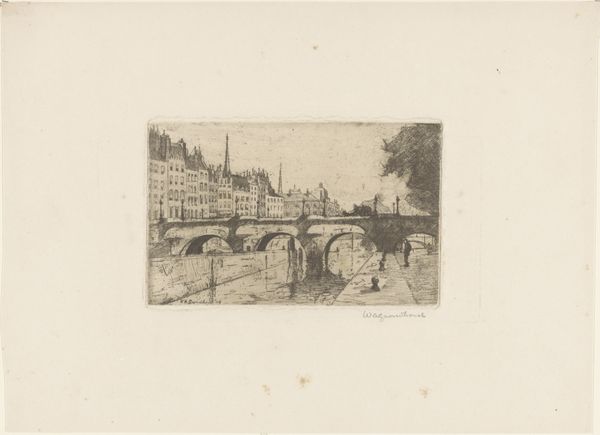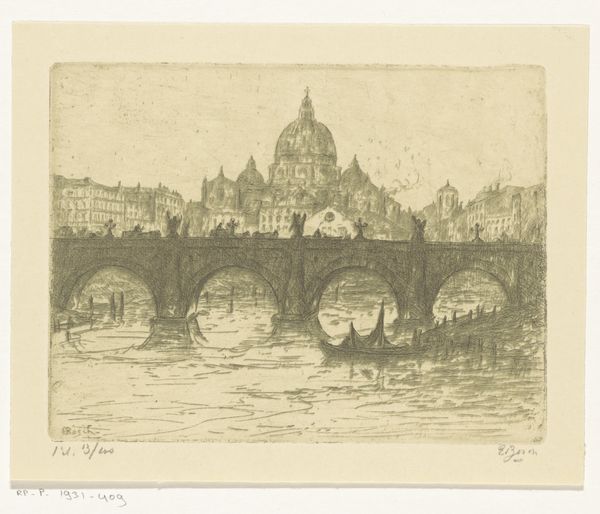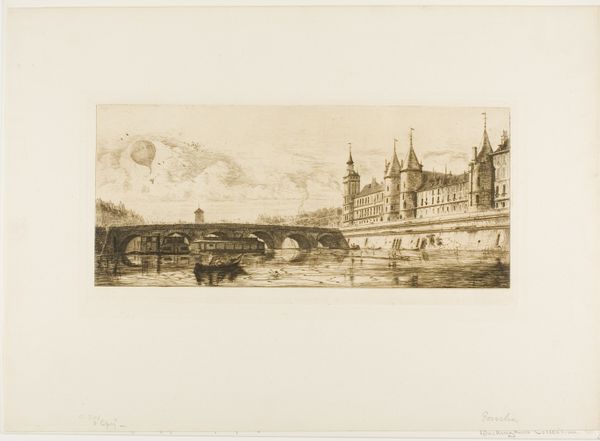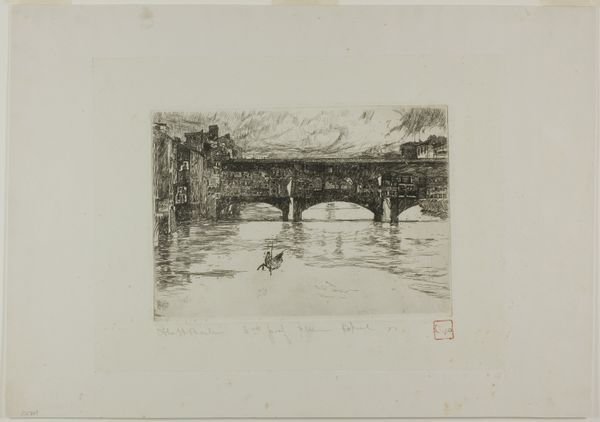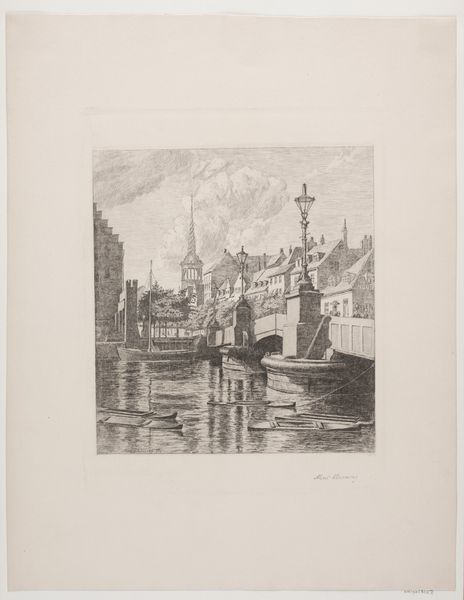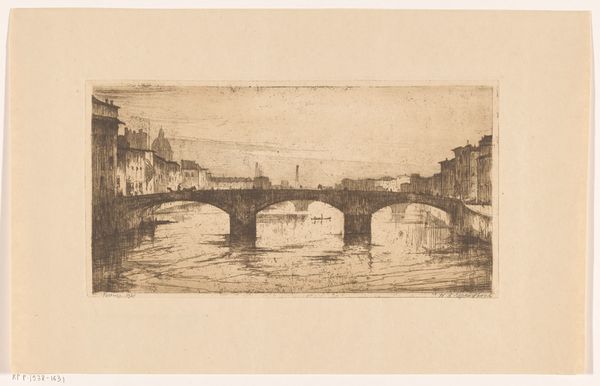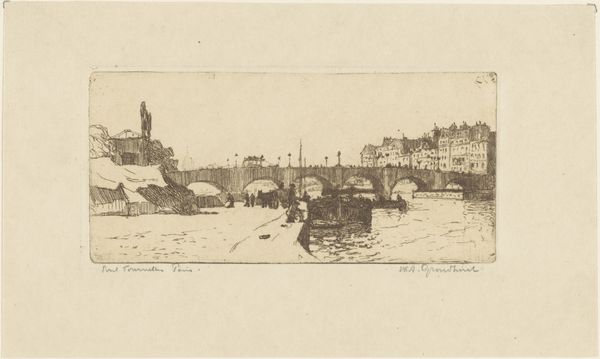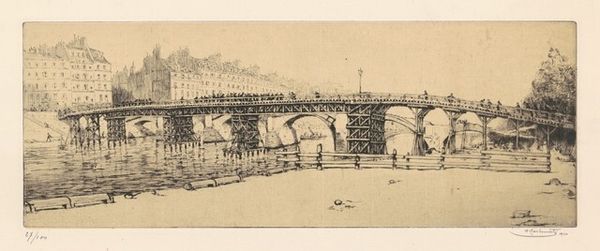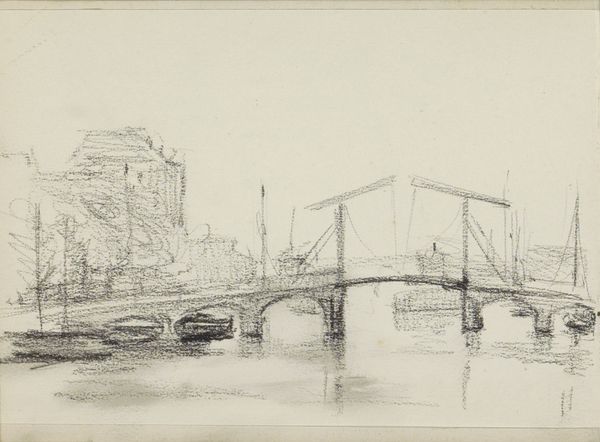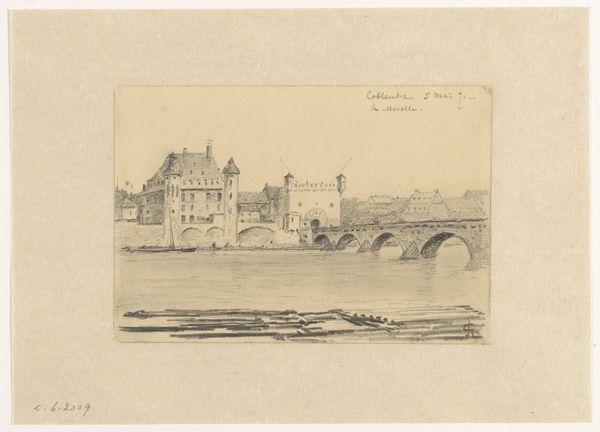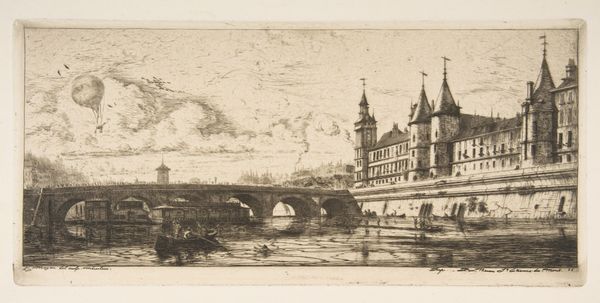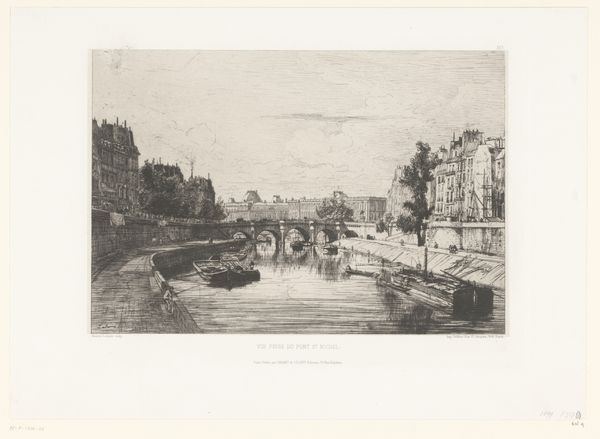
drawing, print, etching
#
drawing
# print
#
etching
#
landscape
#
etching
#
cityscape
Dimensions: 5 1/8 x 5 1/8 in. (13.02 x 13.02 cm) (plate)7 7/8 x 8 5/8 in. (20 x 21.91 cm) (sheet)
Copyright: Public Domain
Editor: This is "Lucerne," a 19th-century etching by George Taylor Plowman, currently housed at the Minneapolis Institute of Art. It depicts a covered bridge, likely in Switzerland. What jumps out at me is how detailed the stonework and the wooden structure are. What can you tell me about it? Curator: It’s intriguing to consider this print as a record of material production and labor. Think about the physical bridge itself. Who built it? What were the conditions of that labor? Plowman's print flattens the complex history of resource extraction, construction, and ultimately, consumption by tourists into a neatly packaged image. Editor: So, the choice of etching as a medium—a relatively accessible form of printmaking—further underscores the commodification of this place, Lucerne? Curator: Precisely. Etchings, unlike unique paintings, can be reproduced, circulated, and consumed. Plowman is participating in the tourist economy, using his skill to create an object easily bought and sold, reproducing this image. Think about who buys it. Who consumes the image of Lucerne versus experiencing the actual place? Editor: That makes me consider the kind of paper used, too. Its texture, its cost… How might the quality of the materials speak to Plowman's target audience or the perceived value of the artwork? Curator: Exactly! Every element – from the ink, the paper, to the method of reproduction, feeds into our understanding of the work's position within a network of economic and social forces. It asks us to consider what we value and how art is imbricated in the production and distribution of value. Editor: It’s fascinating to see this seemingly simple landscape as a layered commentary on production and consumption. It gives me a completely new perspective. Curator: Indeed, viewing art through a materialist lens prompts us to ask difficult questions and to acknowledge the economic and labor-related context of making and looking at art.
Comments
No comments
Be the first to comment and join the conversation on the ultimate creative platform.
